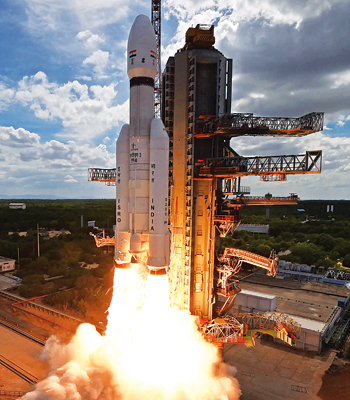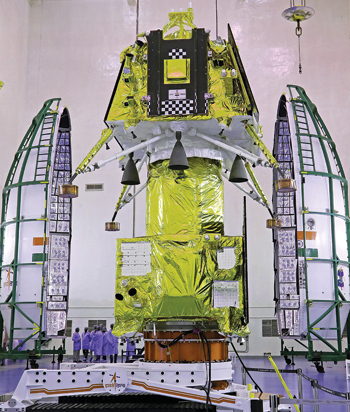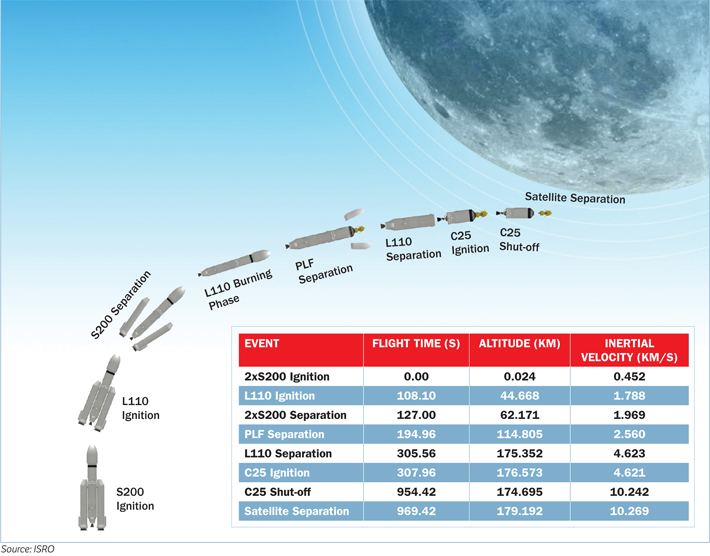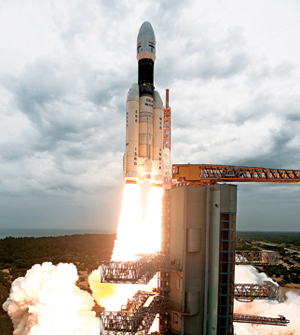INDIAN ARMED FORCES CHIEFS ON OUR RELENTLESS AND FOCUSED PUBLISHING EFFORTS

The insightful articles, inspiring narrations and analytical perspectives presented by the Editorial Team, establish an alluring connect with the reader. My compliments and best wishes to SP Guide Publications.

"Over the past 60 years, the growth of SP Guide Publications has mirrored the rising stature of Indian Navy. Its well-researched and informative magazines on Defence and Aerospace sector have served to shape an educated opinion of our military personnel, policy makers and the public alike. I wish SP's Publication team continued success, fair winds and following seas in all future endeavour!"

Since, its inception in 1964, SP Guide Publications has consistently demonstrated commitment to high-quality journalism in the aerospace and defence sectors, earning a well-deserved reputation as Asia's largest media house in this domain. I wish SP Guide Publications continued success in its pursuit of excellence.
- The layered Air Defence systems that worked superbly, the key element of Operation Sindoor
- Operation Sindoor | Day 2 DGMOs Briefing
- Operation Sindoor: Resolute yet Restrained
- India's Operation Sindoor Sends a Clear Message to Terror and the World – ‘ZERO TOLERANCE’
- Japan and India set forth a defence cooperation consultancy framework, talks on tank and jet engines
India, Moon Bound!
ISRO’s third mission to the moon, Chandrayaan-3 aims to land on the lunar South Pole, a feat yet to be achieved by any nation.


The world turned its gaze toward the sky on July 14, 2023 as Chandrayaan-3, India’s third lunar exploration mission, embarked on its extraordinary journey toward the moon. Propelled by the robust Launch Vehicle Mark-3 (LVM3) of the Indian Space Research Organisation (ISRO), this mission aims to make history by landing on the lunar South Pole, a feat yet to be achieved by any nation. If successful, India will become the fourth country to softly touch down on the moon’s surface, following the United States, the former Soviet Union, and China.
This venture is India’s second attempt at a lunar landing, following the Chandrayaan-2 mission in 2019. The first mission, Chandrayaan-1, discovered the presence of water molecules at the lunar South Pole using its orbiter. While Chandrayaan-2 could not achieve a soft landing, its orbiter continued to observe the moon. Now, Chandrayaan-3 seeks to build upon the accomplishments of its predecessors, leveraging the knowledge gained from over a decade of lunar exploration.
WHAT DOES CHANDRAYAAN-3 CONTAIN?
Chandrayaan-3, weighing 3,900 kg and with a cost of about 6.1 billion rupees ($75 million; £58 million), shares the same objectives as its previous iteration. Its primary goal remains to achieve a soft landing on the surface of the Moon, as emphasised by ISRO. The lander, named Vikram in honor of the founder of ISRO, Vikram Sarabhai, has a weight of approximately 1,500 kg. Within its payload lies the rover, Pragyaan, weighing 26 kg, aptly named after the Sanskrit word for wisdom.

Chandrayaan-3 consists of an indigenous Lander module (LM), a Propulsion module (PM), and a Rover with the objective of developing and demonstrating new technologies required for Interplanetary missions. The Lander will have the capability to soft land at a specified lunar site and deploy the Rover which will carry out in-situ chemical analysis of the lunar surface during the course of its mobility. The Lander and the Rover have scientific payloads to carry out experiments on the lunar surface. The main function of the PM is to carry the LM from launch vehicle injection to the final lunar 100 km circular polar orbit and separate the LM from the PM. Apart from this, the Propulsion Module also has one scientific payload as a value addition which will be operated post-separation of the Lander Module. The launcher identified for Chandrayaan-3 is GSLVMk3 which will place the integrated module in an Elliptic Parking Orbit (EPO) of size ~170 x 36,500 km.
The propulsion module plays a vital role in carrying the lander module from the launch vehicle injection orbit to the point of separation. It will accompany the lander and rover configuration until they reach a lunar orbit of 100 km. Notably, the propulsion module is equipped with the Spectro-polarimetry of Habitable Planet Earth (SHAPE) payload, enabling the study of Earth’s spectral and polarimetric characteristics from the lunar orbit.
Unlike its predecessor, Chandrayaan-3 does not include an orbiter. However, the propulsion module responsible for transporting the lander to lunar orbit is equipped with a scientific instrument designed to observe Earth as if it were an exoplanet. This valuable data will contribute to future studies of exoplanets.
Lander Payloads: Chandra’s Surface Thermophysical Experiment (ChaSTE) to measure the thermal conductivity and temperature; Instrument for Lunar Seismic Activity (ILSA) for measuring the seismicity around the landing site; Langmuir Probe (LP) to estimate the plasma density and its variations. A passive Laser Retroreflector Array from NASA is accommodated for lunar laser ranging studies.
Rover payloads: Alpha Particle X-ray Spectrometer (APXS) and Laser Induced Breakdown Spectroscope (LIBS) for deriving the elemental composition in the vicinity of the landing site.
A passive experiment called the LASER Retroreflector Array (LRA), contributed by NASA, will also be running in the background on the lander, collecting data that could help scientists better understand the dynamics of the moon system.
THE CHANDRAYAAN-3 ROCKET
Chandrayaan-3 was put into an elliptical orbit around the Earth by the Indian Space Research Organisation’s (ISRO’s) heaviest rocket — the Geosynchronous Satellite Launch Vehicle (GSLV) Mark-III.
LVM3 is the operational heavy-lift launch vehicle of ISRO and has a spectacular pedigree of completing 6 consecutive successful missions. This is the 4th operational flight of LVM3, which aims to launch the Chandrayaan-3 spacecraft to Geo Transfer Orbit (GTO).
LVM3 has proved its versatility to undertake most complex missions like:
- Injecting multi-satellites.
- Mission planning to ensure safe relative distance among separated satellites through re-orientation and velocity addition maneuvers.
- Multi orbit (LEO, MEO, GEO) and execute interplanetary missions.
- India’s most prominent and heaviest launch vehicle ferrying Indian and international customer satellites. LVM3-M4 will be launched from the Second Launch Pad (SLP), SDSC, SHAR.
The rocket will also prove its capability for India’s human spaceflight as well as for global customers.
WHAT DOES CHANDRAYAAN-3 AIM TO ACHIEVE?
The mission objectives of Chandrayaan-3 are:
- To demonstrate a Safe and Soft Landing on Lunar Surface
- To demonstrate Rover roving on the moon and
- To conduct in-situ scientific experiments.
To achieve the mission objectives, several advanced technologies are present in Lander such as:
- Altimeters: Laser & RF based Altimeters
- Velocimeters: Laser Doppler Velocimeter & Lander Horizontal Velocity Camera
- Inertial Measurement: Laser Gyro based Inertial referencing and Accelerometer package
- Propulsion System: 800N Throttleable Liquid Engines, 58N attitude thrusters & Throttleable Engine Control Electronics
- Navigation, Guidance & Control (NGC): Powered Descent Trajectory design and associate software elements
- Hazard Detection and Avoidance: Lander Hazard Detection & Avoidance Camera and Processing Algorithm
- Landing Leg Mechanism.
To demonstrate the above said advanced technologies in earth conditions, several Lander special tests have been planned and carried out successfully viz.
- Integrated Cold Test: For the demonstration of the Integrated Sensors & Navigation performance test using a helicopter as a test platform
- Integrated Hot test: For the demonstration of closed-loop performance test with sensors, actuators, and NGC using a Tower crane as a test platform
- Lander Leg mechanism performance test on a lunar simulant test bed simulating different touch-down conditions.
NOMINAL FLIGHT SEQUENCE

WHAT MAKES CHANDRAYAAN-3 SO SIGNIFICANT FOR INDIA?
Chandrayaan-3’s objectives go beyond national significance. The mission has the potential to attract investments and bolster India’s private space sector. The global space exploration market, valued at $486 billion in 2022, is predicted to reach $1,879 billion by 2032. This surge in investments will provide a significant boost to Indian companies and the national economy.
Furthermore, Chandrayaan-3’s successful launch has enhanced the reliability of the human-rated Launch Vehicle Mark (LVM). As India prepares for the Gaganyaan mission, which aims to demonstrate human spaceflight capability, the utilisation of multiple systems rated for humans in the Chandrayaan-3 mission marks a significant milestone. The Gaganyaan project entails launching three astronauts into a 400 km orbit for a three-day mission, followed by a safe return to Earth with a landing in the Indian seas.
India’s space ecosystem is rapidly expanding, and Chandrayaan-3 plays a vital role in its development. India’s recent signing of the Artemis Accords for peaceful moon exploration, coupled with the issuance of its national space policy, showcases the nation’s commitment to boosting its space economy.
Chandrayaan-3 also signifies India’s growing indigenous technological capabilities, enabling collaborations with countries worldwide on various missions for this mission and the ones to come in the future. In 2024, India is set to launch NISAR (NASA-ISRO Synthetic Aperture Radar), a joint observatory that will monitor minute changes in Earth’s surface using radars contributed by both nations. Furthermore, India has partnered with Japan’s space agency for the Lunar Polar Exploration (LUPEX) mission, which aims to study water ice present in the moon’s permanently shadowed regions.
As multiple nations compete to reach the moon and establish a long-term presence near its south pole, the Chandrayaan-3 mission positions India as a key player in future lunar exploration. With its groundbreaking technologies, scientific objectives, and collaborative spirit, Chandrayaan-3 propels India further into the forefront of global space exploration.
WHAT IS NEXT?
The mission life of the lander and the rover is one lunar day which is equal to 14 Earth days.
The spacecraft was launched around this time as this is when the moon is closest to the earth. Now the whole process of the spacecraft reaching the moon is likely to take around 42 days, with the landing slated for August 23 at the lunar dawn.
After the lift-off on July 14, the craft will take about 15 to 20 days to enter the Moon’s orbit. Scientists will then start reducing the rocket’s speed over the next few weeks to bring it to a point that will allow a soft landing for Vikram.
If all goes to plan, the six-wheeled rover will then eject and roam around the rocks and craters on Moon’s surface, gathering crucial data and images to be sent back to Earth for analysis.
One of the unique challenges of lunar landings is the absence of a substantial atmosphere to slow down spacecraft as they descend. Unlike Earth, the moon’s atmosphere is incredibly thin. As a result, spacecraft must employ a more gradual approach and decelerate themselves to achieve a successful landing.
During a post-launch press conference, ISRO Chairman Somanath emphasised the significance of the next 42 days. The mission’s nominal programme includes five earth-bound maneuvers, scheduled to conclude on July 31. Subsequently, the trans-lunar insertion will take place on August 1, propelling Chandrayaan-3 toward the moon. After the spacecraft is captured by lunar gravity, the propulsion module and lander module will separate on August 17. If all goes according to plan, the landing is slated for August 23 at 5:47 pm IST, marking a pivotal moment in India’s lunar exploration.
WHY GO TO THE LUNAR SOUTH POLE?
A major attraction of the lunar south pole lies in its unexplored terrain. In comparison to the north pole, the surface area at the south pole remains largely unexplored, with extensive regions perpetually cloaked in shadow. This unique aspect opens up the tantalising possibility of water’s presence in these permanently shadowed areas. The revelation of water on the Moon during the Chandrayaan-1 mission in 2008, near the south pole, further solidified the region’s significance.
NASA aptly acknowledges the challenges posed by the lunar south pole, describing it as a location with extreme and contrasting conditions. Nevertheless, these unique characteristics also hold immense promise for groundbreaking scientific discoveries in deep space. The region’s mysteries and distinct attributes make it an ideal setting for humanity to venture, reside, and conduct pioneering research.
CHANDRAYAAN-2
 Chandrayaan-2 was India’s second lunar exploration mission, launched by ISRO on July 22, 2019 took it ahead of Chandrayaan-1. The mission aimed to achieve a soft landing on the moon’s surface and deploy a rover to conduct scientific experiments.
Chandrayaan-2 was India’s second lunar exploration mission, launched by ISRO on July 22, 2019 took it ahead of Chandrayaan-1. The mission aimed to achieve a soft landing on the moon’s surface and deploy a rover to conduct scientific experiments.The spacecraft consisted of three main components: an orbiter, a lander called Vikram, and a rover named Pragyan. The orbiter played a crucial role in Chandrayaan-2’s mission, providing communication support and capturing high-resolution images of the lunar surface. However, during the final stages of descent, the lander, Vikram, encountered an issue and deviated from its planned trajectory, resulting in a crash landing on September 7, 2019. Despite this setback, the orbiter component of Chandrayaan-2 successfully entered the moon’s orbit and continued to function as intended.
The orbiter carried a suite of scientific instruments designed to study the lunar surface, atmosphere, and phenomena like moonquakes. It played a vital role in collecting valuable data and capturing detailed images of the moon’s surface, including the intended landing site. Equipped with advanced imaging capabilities, the orbiter has been instrumental in providing highly detailed and high-resolution images of the intended landing site. This extensive data has been meticulously analysed to gain insights into the topography, identify the presence of boulders and craters, and expand the potential landing area for future missions.
Despite the challenges faced during the surface mission, the accomplishments of the Chandrayaan-2 orbiter cannot be understated. Its ability to capture precise and comprehensive imagery has significantly contributed to our understanding of the moon’s terrain and will play a crucial role in guiding future landing attempts.





